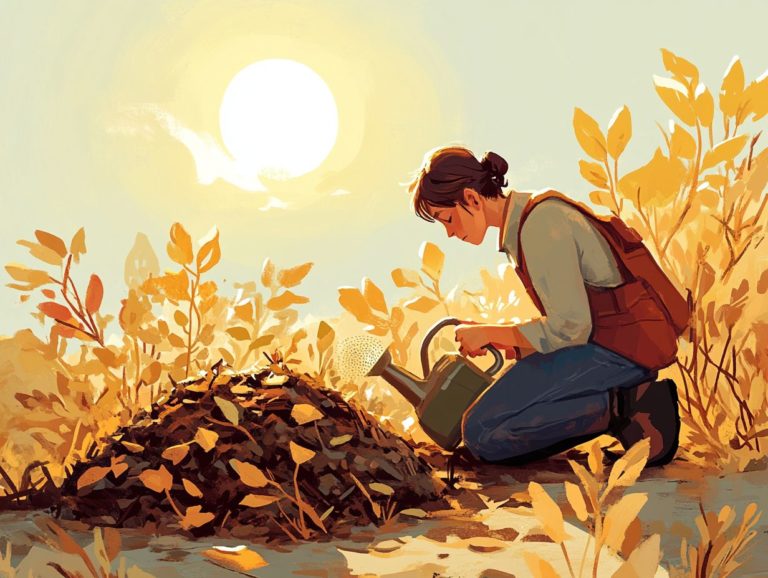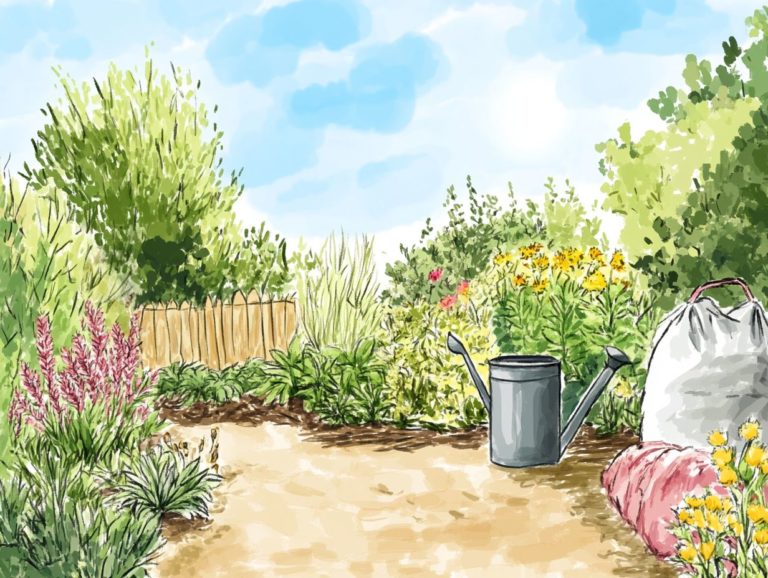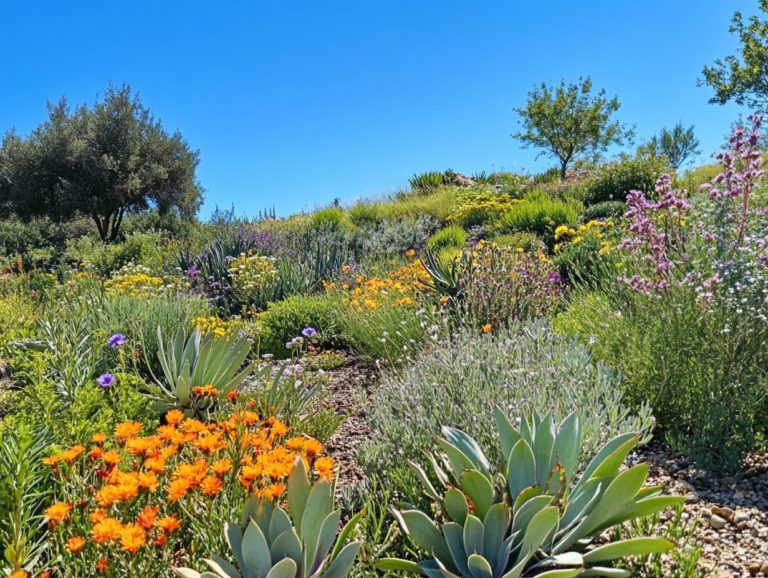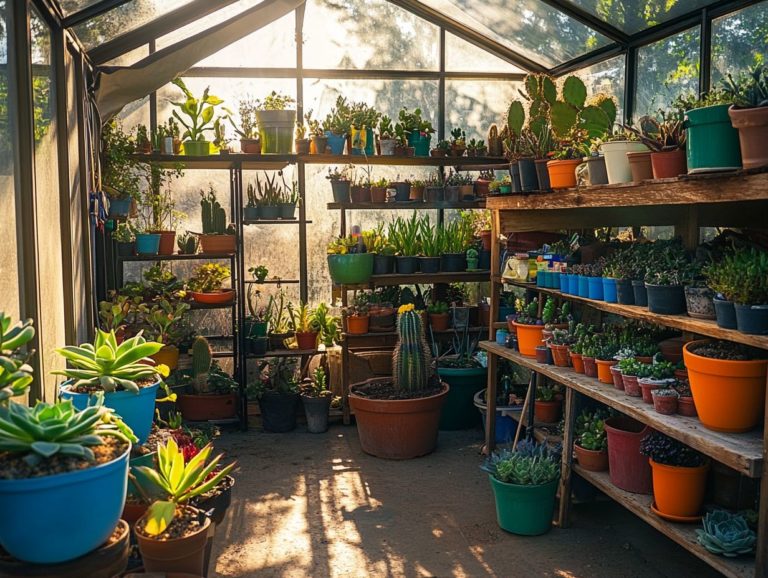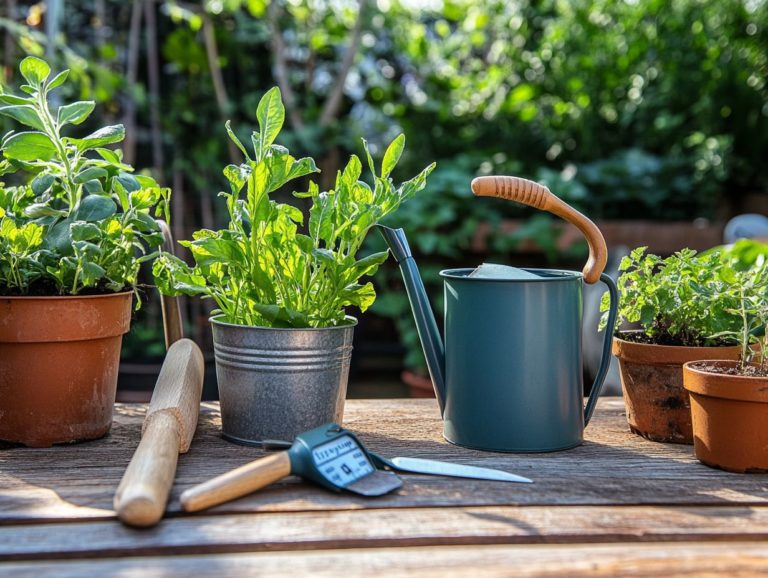Signs of Overwatering in Drought Plants
Drought-tolerant plants are remarkable in their ability to thrive in arid environments, yet even they can fall victim to the all-too-common issue of overwatering.
This article delves into the causes and signs of overwatering, equipping you with the knowledge to identify visual indicators and assess the potential impacts on your plant’s well-being.
You’ll find practical steps for rectifying this oversight, along with valuable tips for preventing overwatering down the line.
Grasping these elements is essential to keeping your drought-tolerant plants healthy and vibrant.
Contents
- Key Takeaways:
- Understanding Overwatering in Drought Plants
- Signs of Overwatering
- Practical Steps to Prevent Overwatering
- How to Correct Overwatering
- Preventing Overwatering in Drought Plants
- Frequently Asked Questions
- What are the signs of overwatering in drought plants?
- How does overwatering affect drought plants?
- Can overwatering drought plants be fixed?
- How often should drought plants be watered?
- What should I do if my drought plant shows signs of overwatering?
- Are there any preventative measures to avoid overwatering my drought plants?
Key Takeaways:
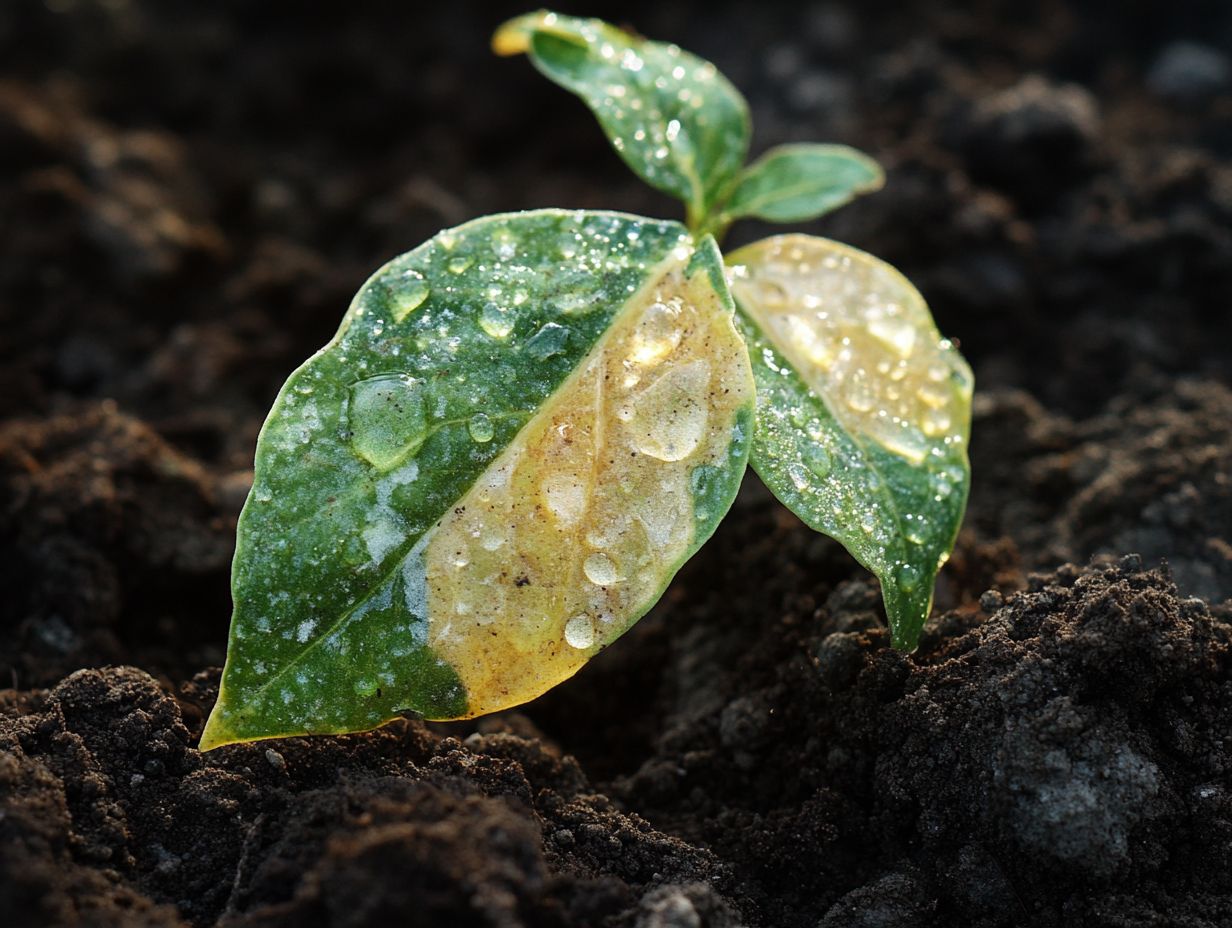
- Overwatering can be detrimental to drought plants, causing root rot and hindering their ability to survive in dry conditions.
- Signs of overwatering in drought plants include wilting, yellowing leaves, and stunted growth.
- To correct overwatering, allow the soil to dry out and adjust watering frequency and amount. Prevention is key through proper watering techniques and considering the unique needs of drought plants.
Understanding Overwatering in Drought Plants
Understanding overwatering in drought-resistant plants is essential for you as a dedicated plant parent aiming to keep your potted companions thriving. Overwatering happens when the soil becomes saturated, preventing airflow and triggering a series of problems like root rot, a condition where roots decay due to excess water, and unhealthy roots.
It’s vital for you to identify the signs and repercussions of overwatering while applying effective care techniques to nurture indoor plants such as Snake plants, Calatheas, and Pothos.
By doing so, you ll ensure that your plants receive just the right amount of water, safeguarding their health and vitality.
What Causes Overwatering in Drought Plants?
Overwatering drought-stressed plants can stem from several factors, including inadequate drainage holes in pots, improper soil mixtures, and excessive watering without monitoring moisture levels. It’s important to recognize the signs of underwatering drought plants to ensure their health.
When pots lack sufficient drainage, water gets trapped, resulting in waterlogged soil that prevents roots from getting the air they need and promotes root rot. Using a soil mixture that retains too much moisture can create an unhealthy environment where excess water accumulates, depriving your roots of the oxygen they need to thrive.
Neglecting regular moisture checks may lead to a watering routine that s a bit too generous, exacerbating the issue. The consequences of overwatering can manifest as yellowing leaves, droopy stems, and stunted growth, negatively affecting your beloved potted plants.
To keep your plants thriving, it’s crucial to ensure proper drainage and choose the right soil composition, striking the perfect balance for healthy development.
Signs of Overwatering
Recognizing the signs of overwatering in your potted plants is crucial for you as a dedicated plant parent, as it can prevent irreversible damage. Act quickly! Common indicators include wilting leaves, yellowing foliage, and the ominous presence of root rot.
These issues not only jeopardize the health of your plants but can also invite unwelcome pests like fungus gnats into your indoor oasis. By understanding these warning signs, you’ll have the power to take swift action and restore your beloved plants to full vitality.
Visual Indicators
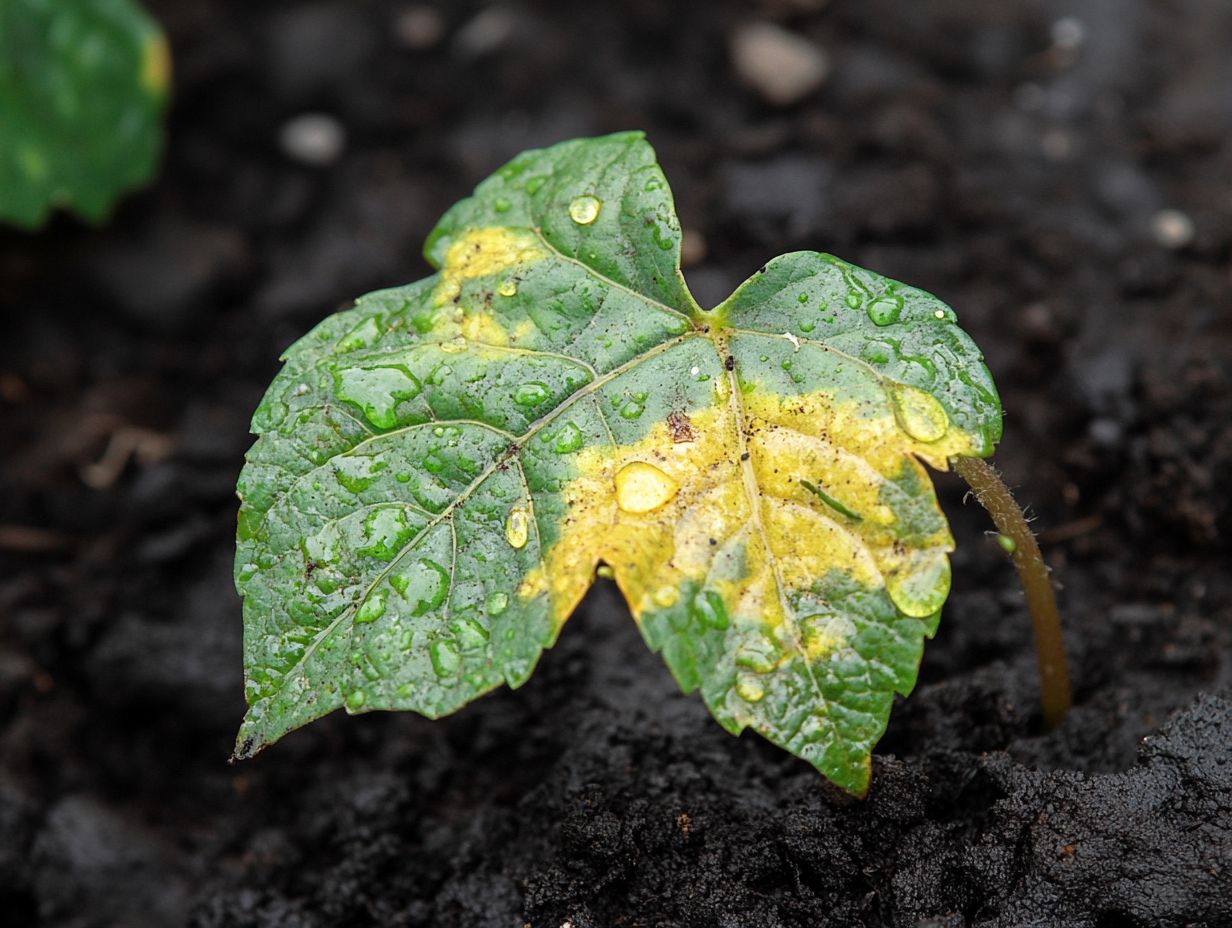
Visual indicators of overwatering are essential for diagnosing issues in your potted plants. Look out for wilting or yellowing leaves; these are often the first signs that something isn’t right.
Take the Anthurium, for instance. It may display drooping blossoms and waterlogged soil, making it abundantly clear that overwatering is at play. Similarly, a Monstera might reveal curled leaves and an overall unhealthy appearance, signaling its struggle with excess moisture. These visual cues often indicate root rot, a condition where roots begin to decay from being submerged in too much water for too long.
As a home gardener, it s crucial to pay close attention to these symptoms. Catching them early can help you prevent more severe complications, allowing your plant to bounce back and thrive once again.
Practical Steps to Prevent Overwatering
- Always check drainage holes in your pots to ensure they are clear.
- Use soil mixtures specially designed for drought-resistant plants.
- Monitor moisture levels regularly with a moisture meter.
- Adjust your watering schedule based on the plant’s needs and environmental conditions.
Conclude your plant care journey by sharing your experiences or asking questions about caring for your drought-tolerant plants!
Effects on Plant Health
Overwatering can severely affect plant health, leading to root rot and unhealthy roots that compromise your plants’ vitality.
Excess moisture can suffocate the roots, making it difficult for them to absorb essential nutrients from the soil. This often triggers a chain reaction of deficiencies that impairs growth and vigor. Different species react differently to oversaturation; for example, succulents are particularly vulnerable and can decline rapidly. The damp environment from overwatering also attracts pests like fungus gnats, which thrive in soggy conditions.
This worsens the issues with poor nutrient uptake and introduces complications that can jeopardize your plants’ health. Hence, adopting careful watering practices is essential for any gardener aiming to maintain a thriving garden.
How to Correct Overwatering
Correcting overwatering is crucial for revitalizing the health of your potted plants. Key steps include repotting the plant and trimming away any rotting roots.
These measures can effectively restore your plants to their former vitality.
Steps to Fix Overwatering
To address overwatering, follow practical steps. Start by repotting your plant into fresh soil and trimming any rotting roots. Ensure proper drainage to prevent future issues.
Gently remove the affected plant from its pot and examine the roots for signs of rot or decay. Trim away damaged sections using sterilized scissors.
Select a suitable soil mixture that promotes healthy growth, incorporating components like perlite or coarse sand.
Choosing a pot with adequate drainage holes is vital, as this allows excess moisture to escape, significantly enhancing your plant’s health. Following these steps not only resolves overwatering issues but also creates a thriving, sustainable environment for your plant to flourish.
Preventing Overwatering in Drought Plants
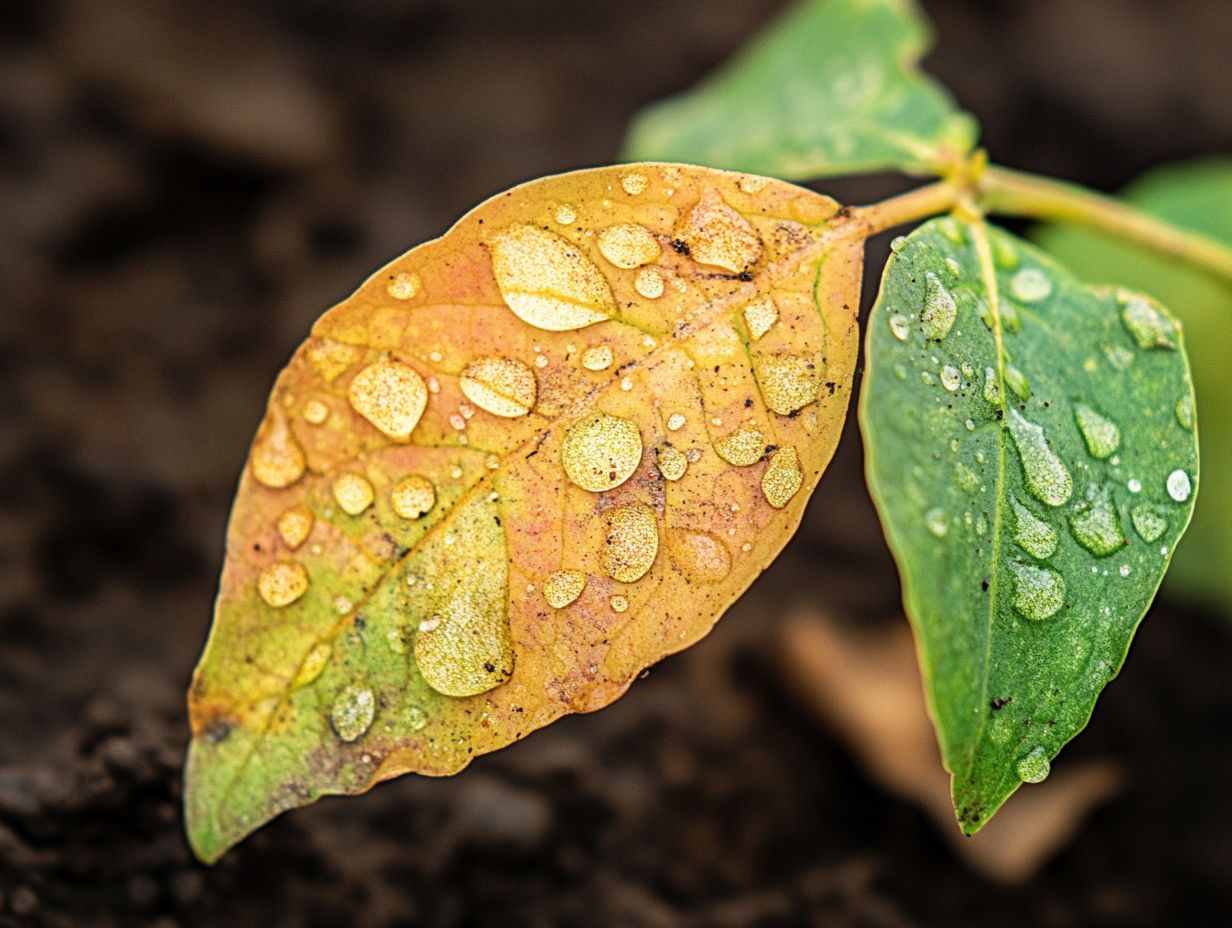
Preventing overwatering in drought-resistant plants is essential. You can achieve this by using proper watering techniques, a well-balanced soil mixture, and regularly checking soil moisture levels with a moisture meter.
This approach safeguards your plants health and promotes their resilience in challenging conditions.
Proper Watering Techniques
Implementing proper watering techniques is crucial for your potted plants’ health. A moisture meter can help you determine the best time to water, especially in higher humidity settings.
Regularly check the soil moisture levels to establish a consistent watering schedule tailored to your plants’ needs. You may find that your plants require more frequent watering during the warm months when humidity levels fluctuate.
Using various methods, like drip irrigation or bottom watering, ensures that hydration reaches the roots effectively. Monitor humidity levels closely; higher humidity may reduce watering frequency, while lower humidity requires your extra attention.
Understanding these factors fosters optimal growth and minimizes risks like root rot or dehydration, allowing your plants to thrive beautifully.
Factors to Consider for Drought Plants
When caring for drought-resistant plants, keep key factors in mind to avoid the pitfalls of overwatering. Focus on the type of soil, the material of your pots, and the importance of good air movement around the roots.
The right soil mixture is essential for balancing holding water and drainage. Some blends are excellent at retaining moisture, while a well-draining mix lets excess water escape, preventing root rot.
The material of your pots also significantly impacts your plants. For example, ceramic pots slow down evaporation, whereas plastic pots may trap heat but can hinder drainage if not designed well.
Don t underestimate the need for air movement around the roots it’s vital for healthy growth. Proper airflow helps with oxygen exchange, allowing the roots to absorb nutrients efficiently and thrive.
Frequently Asked Questions
What are the signs of overwatering in drought plants?

Look for signs like wilting leaves and yellowing or browning edges. These indicate that your plant is getting too much water.
How does overwatering affect drought plants?
Overwatering can be just as harmful as underwatering. It leads to root rot, making it hard for the plant to absorb necessary nutrients and water, and can attract pests and diseases.
Can overwatering drought plants be fixed?
If you catch it early, you can fix overwatering by adjusting your watering habits and letting the soil dry out. However, if the plant has suffered significant damage, it may not fully recover.
How often should drought plants be watered?
Water drought plants only when the soil feels dry. This might mean watering less often than other plants since they thrive in drier conditions.
What should I do if my drought plant shows signs of overwatering?
If you notice signs of overwatering, stop watering immediately and let the soil dry out. You can gently remove the plant from its pot to check for root rot.
Are there any preventative measures to avoid overwatering my drought plants?
Yes! Take charge of your plant’s health! Prevent overwatering by using well-draining soil, avoiding waterlogged pots, and checking soil moisture before watering. A moisture meter can help accurately determine when your plants need water.


